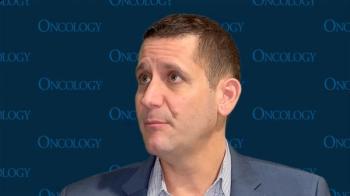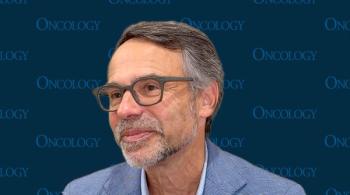
A Review of the 2022 SABCS Twitter Takeover
During the 2022 San Antonio Breast Cancer Symposium, Neil M. Iyengar, MD, took over the CancerNetwork® Twitter to review key presentation takeaways.
The
During General Session 3 of the conference, CancerNetwork® hosted a Twitter Takeover featuring Neil M. Iyengar, MD, associate attending physician at Memorial Sloan Kettering Cancer Center in New York, New York. In a #CNRealtimeReport, Iyengar discussed these presentations and provided the key takeaways from each trial.
Phase 3 EMERALD Trial
The first trial Iyengar covered was the
The trial included patients who had previously been treated with CDK4/6 inhibitors with a subgroup of patients with ESR1-mutant disease. Patients received treatment with either elacestrant or standard of care therapy (SOC).
A total of 87.5% of patients who completed a minimum of 6 months of treatment with a CDK4/6 therapy; among these patients, investigators reported a 31.2% increase in progression-free survival (PFS) vs SOC (HR, 0.688; 95% CI, 0.535-0.884). Additionally, the median PFS for patients in the this subgroup was 2.79 months (95% CI, 1.94-3.78) in the elacestrant arm and 1.91 months (95% CI, 1.87-2.14) in the SOC arm.
At 6 months, those with an ESR1 mutation had a median PFS of 4.14 months (95% CI, 2.20-7.79) in the elacestrant arm vs 1.87 months (95% CI, 1.87-3.29) in the SOC arm (HR, 0.517; 95% CI, 0.361-0.738).
A total of 3.4% of patients in the elacestrant arm and 0.9% of patients in the SOC arm needed to discontinue the trial due to treatment-related adverse effects.
Phase 2 SERENA Trial
Next, Iyengar touched on the significance of the
The trial consisted of multiple camizestrant cohorts with different doses including 300 mg, 75 mg, and 150 mg as well as a fulvestrant cohort. It was noted that the 300 mg cohort data has not been formally analyzed as the treatment arm ended early.
The median PFS in the 75 mg group was 7.2 months (95% CI, 3.7-10.9; HR, 0.58; 95% CI, 0.41-0.81; P = .0124), 7.7 months(95% CI, 5.5-12.9; HR, 0.67; 95% CI, 0.48-0.92; P = .0161) in the 150 mg cohort, and 3.7 months 95% CI, 2.0-6.0)in the fulvestrant cohort (.
On cycle 2, day 1, camizestrant was found to reduce ESR1-mutant ctDNA levels to undetectable or close to undetectable in the 75 mg and 150 mg treatment arms. Additionally, the overall response rate was 15.7% in the 75 mg cohort (OR, 1.43; 95% CI, 0.63-3.33; 2-sided P-value = .4789), 20.0% in the 150 mg cohort (OR, 1.96; 95% CI, 0.88-4.51; 2-sided P-value = .1675), and 11.8% in the fulvestrant cohort.
Phase 3 CAPItello-291 Trial
Data from the
In the capivasertib arm, the investigator-assessed PFS was 7.2 months (95% CI, 7.2-7.4) vs 3.6 months (95% CI, 2.8-3.7) in the placebo arm (HR, 0.60; 95% CI, 0.51-0.71; 2-sided P <.001). In those with AKT pathway mutations, the median PFS was 7.3 months (95% CI, 5.5-9.0) in the capivasertib arm vs 3.1 months (95% CI, 2.0-3.7) in the placebo arm (HR, 0.50; 95% CI, 0.38-0.65; 2-sided P <.001). Additionally, those in the non-altered population had a median PFS of 7.2 months (95% CI, 4.5-7.4) in the capivasertib arm vs 3.7 months (95% CI, 3.0-5.0) in the placebo arm (HR, 0.70; 95% CI, 0.56-0.88).
The planned OS analysis reached 28% maturity in the overall population (HR, 0.74; 95% CI, 0.56-0.98) and the AKT-altered pathway group (HR, 0.68; 95% CI, 0.45-1.05).
The grade 3 or higher AEs in the capivasertib vs placebo groups included diarrhea (9.3% vs 0.3%), maculopapular rash (6.2% vs 0.0%), rash (5.4% vs 0.3%), hyperglycemia (2.3% vs 0.3%), and stomatitis (2.0% vs 0.0%). In the AKT-altered group, the safety profile was similar.
Phase 2 PACE Trial
Finally, results from the
The median PFS in the fulvestrant/palbociclib arm was 4.6 months (90% CI, 3.6-5.9; HR, 1.11; 90% CI, 0.74-1.66; P = .62) vs 4.8 months (90% CI, 2.1-8.2) in the fulvestrant alone arm and 8.1 months (90% CI, 3.2-10.7) in the triplet regimen arm (HR, 0.75; 90% CI, 0.47-1.20; P = .23).
The ORR in the fulvestrant group was 10.8%, 13.7% for fulvestrant plus palbociclib, and 17.9% in the triplet combination arm. The clinical benefit rate was 29.1% in the fulvestrant arm, 32.4% in the fulvestrant plus palbociclib arm, and 35.2% in the triplet combination arm.
The median OS was 27.5 months (90% CI, 21.1-38.0) in the fulvestrant arm, 24.6 months (90% CI, 21.5-33.3) in the fulvestrant plus palbociclib arm, and 42.5 months (90% CI, 26.8-46.0) in the triplet arm.
To view the full Twitter Takeover,
Newsletter
Stay up to date on recent advances in the multidisciplinary approach to cancer.
















































































